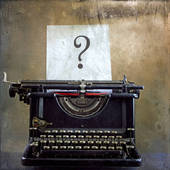As writer-friends who have worked together for many years – on feature articles, literary events, a book and, of course, this blog – we’re always interested to hear about other authors who’ve enjoyed a sustained period of collaboration. Earlier this year, we heard that British publisher Handheld Press were about to republish an out-of-print novel authored by two such women. Of course we were immediately intrigued, not just by the story of Business as Usual, but also that of its authors Jane Oliver and Ann Stafford.

Like many popular authors of the past, the literary reputations of Ann Stafford and Jane Oliver have faded since their mid-twentieth century heyday – a particularly productive period in the lives of these staggeringly prolific writers. Between them, they brought out close to 30 books in the 1950s alone! Although their names are not particularly well-known today, for several decades from the 1930s onwards the pair enjoyed steady success, both with the works they authored together and in their solo writing careers, covering genres ranging from children’s literature to historical fiction to stories for radio broadcast.
The pair met in the period between the two World Wars, when they were both working at The Times Book Club – a London venue affiliated with The Times newspaper, which functioned as a reading rooms, lending library and bookshop. Anne Pedler, who’d take the pen-name Ann Stafford, was then running the bookshop’s export department. A talented writer and artist, it was ‘the gaiety of her line drawings’, sketched absentmindedly as she sat at her desk dictating letters, that first caught the eye of her colleague Helen Evans (later Rees), who’d use the pseudonym Jane Oliver.
They became friends and, as Oliver would later put it, began to collaborate on ‘light-hearted satires’, including Business as Usual (1933) and its sequel Cook Wanted (1934). Business as Usual tells the story of Hilary Fane, a young woman who brushes aside the disapproval of her fiancé and decides to spend a year living independently and earning her own money prior to settling down to marriage. Hilary ends up working at the fictional Everyman’s department store on Oxford Street, which bears more than a passing resemblance to the famous Selfridges. Stafford and Oliver clearly drew on their own experiences as female employees of the period to bring the 1930s world of work and shopping to life.

The novel attracted praise from the press on both sides of the Atlantic, in newspapers large and small. The St Andrews Citizen – based in the Scottish county of Fife, where Oliver had been educated – trumpeted the success of this new book by a ‘former ST LEONARD’ S SCHOOL GIRL’. In an enthusiastic review, the New York Times described Business as Usual as a ‘lively little book’ with ‘an admirable restrained sense of humor’ and remarked on the ‘witty’ drawings supplied by Stafford, which accompany the text. It’s nice to think that these illustrations offer readers glimpses of the kind of office doodles that had so charmed Oliver during the friends’ days working at The Times Book Club.
The New York Times had speculated about which writer had supplied specific elements of the novel’s story and it’s also interesting to wonder how the pair divided the labour of writing. The epistolary form of Business as Usual – including fictional letters, telegrams, office memos and the like – perhaps lends itself particularly well to joint authorship. But in the years to come, Oliver and Stafford would collaborate on other kinds of books too, including a series of romance novels for Mills & Boon, published this time under a single shared pseudonym, Joan Blair.
During the Second World War, both women contributed to the national effort by volunteering as ambulance drivers, while still continuing with their tireless publishing output. In 1940, tragedy struck when Oliver’s husband, the writer John Llewellyn Rhys, was killed while serving as a Royal Air Force pilot.
A grief-stricken Oliver, supported by Stafford, set up the John Llewelyn Rhys Prize in his honour – a highly respected annual literary award that would recognise the talents of other young writers for decades to come.
Stafford was the first of the two women to pass away, in 1966. Long before this date arrived, the pair had established both a strong working collaboration and a friendship of deep, enduring closeness – a fact movingly illustrated by a revelation in the introduction to the re-released Business as Usual. Such was the strength of the bond between them that it was Oliver who took care of Stafford during her final illness.
Business as Usual by Jane Oliver and Ann Stafford, illustrated by Ann Stafford and with a new introduction by Kate Mcdonald is published by Handheld Press.








 Vicky Grut
Vicky Grut

